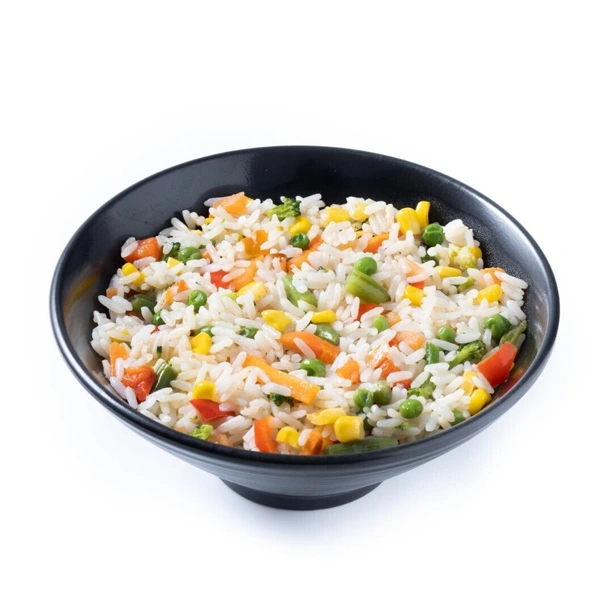

Top Health Benefits of vegetable rice You Need to Know
This vegetable rice is not only vibrant and flavorful but also packed with essential nutrients, making it a great addition to a healthy diet. The combination of colorful vegetables like carrots, bell peppers, peas, corn, and green beans provides a rich source of vitamins and minerals, including vitamin A, C, and K, as well as fiber, which supports digestive health. The rice serves as a complex carbohydrate, providing long-lasting energy, while the olive oil offers healthy fats, including omega-3 fatty acids, which are great for heart health. This dish is low in calories, making it ideal for those looking to maintain or lose weight while still enjoying a filling and nutritious meal. It's also a good option for vegetarians and vegans, as it provides a variety of plant-based nutrients. Furthermore, this recipe is versatile enough to adapt to different dietary needs, making it a great choice for a healthy, balanced meal.
Recipe :
For 7 people
Enjoy your healthy, quick, and delicious vegetable rice!
When preparing this vegetable rice, it's important to consider the balance of cooking times for each vegetable to maintain their nutritional integrity and texture. Start by sautéing the harder vegetables like carrots and green beans first, as they take longer to cook, followed by the softer vegetables like peas and bell peppers to avoid overcooking. Be mindful of the heat level when sautéing; a medium-high heat is ideal for ensuring the vegetables retain their vibrant colors and crunch without becoming mushy. If you're adding soy sauce for extra flavor, be cautious of the salt content, especially if you are following a low-sodium or DASH diet. Additionally, consider using brown rice instead of white rice to increase the fiber content and make the dish even more nutritious. Finally, if you're serving the dish as a main course, pair it with a good source of protein, like grilled tofu, chicken, or fish, to make it a more complete and satisfying meal.

This vegetable rice is a versatile dish that aligns well with several dietary preferences, especially those focusing on plant-based nutrition. It's suitable for vegan and vegetarian diets as it contains no animal products, and it's naturally gluten-free, making it a safe option for individuals with gluten sensitivities or celiac disease. Additionally, it fits well into a low-calorie diet, thanks to its light ingredients and the absence of heavy sauces or excessive fats, making it an excellent choice for those looking to maintain or lose weight. However, it is not suitable for ketogenic or paleo diets due to the high carbohydrate content from the rice, which may not align with the low-carb principles of these diets. It also doesn't provide a high amount of protein, so it might not be ideal for those on a high-protein diet unless paired with a protein source such as tofu or beans. While the dish can be incorporated into a DASH diet with some adjustments to the sodium content (such as reducing or omitting the soy sauce), it may not fully meet the strict requirements of a ketogenic or paleo regimen. For those practicing intermittent fasting, the dish can be consumed during eating windows but should be balanced with appropriate portions of protein if aiming to meet nutritional needs.
...